Quincy's 5 most dangerous intersections. How the city plans to improve them
QUINCY − With more than 100,000 residents, and bounded to the north by New England's largest metropolis, Quincy's traffic is intense. In certain places, it can be dangerous for drivers, cyclists and pedestrians alike.
The state Department of Transportation tracks crash locations statewide and maps areas of the most dangerous 5% for car, bicycle and pedestrian crashes. Several locations in Quincy appear on the list.
The map is based on crash numbers from 2018 to 2020, the most recent data that has been sufficiently processed. For crashes involving bikes and pedestrians, the map uses data from 2011 to 2020. The larger time frame yields more information, which is useful because pedestrian and bike crashes are rarer than motor vehicle accidents.
Quincy Traffic Engineer Allison Ruel said the Department of Transportation ranks locations based on the number and severity of accidents, with those involving fatalities or serious nonfatal injuries weighted much higher than accidents involving only property damage.
The data doesn't account for crash rate, the percentage of vehicles entering an intersection where there's an accident. That means a high-volume intersection may have a large number of crashes but a low crash rate, whereas the opposite could be true for a less-traveled intersection. In that case, the less dangerous, high-volume intersection would show up on the list, but the more dangerous, low-volume intersection would not.
Here are the five most dangerous intersections in Quincy, in descending order:
No. 1: Hannon Parkway at Burgin Parkway
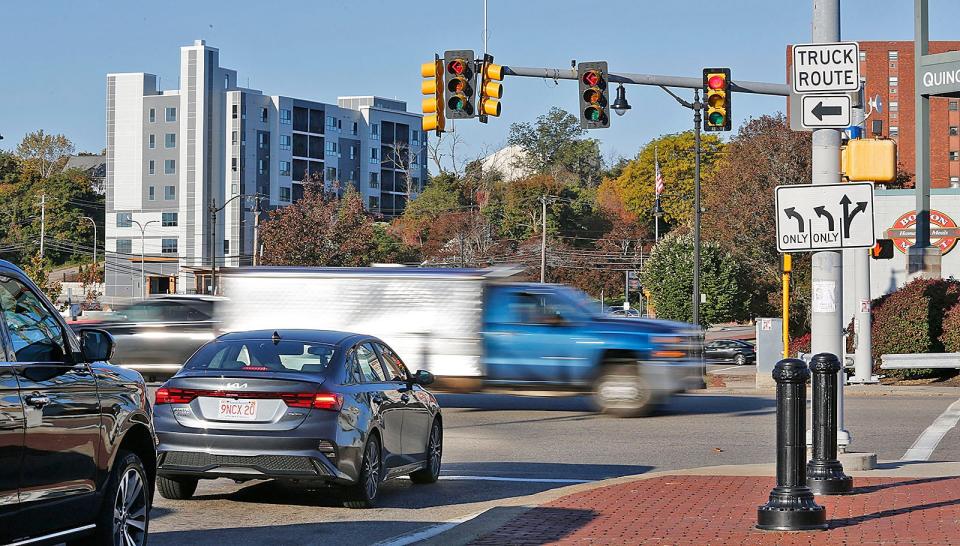
Between 2018 and 2020, a total of 66 motor vehicle crashes occurred at the intersection of these well-traveled roads. Sixteen of them involved minor injuries. There were no fatalities or nonfatal serious injuries in this period.
Between 2011 and 2020, the same area had 41 accidents involving pedestrians and bicyclists. Of those, 32 involved bodily injury. In nine instances there were fatalities or nonfatal serious injuries. Available state data doesn't distinguish between the two.
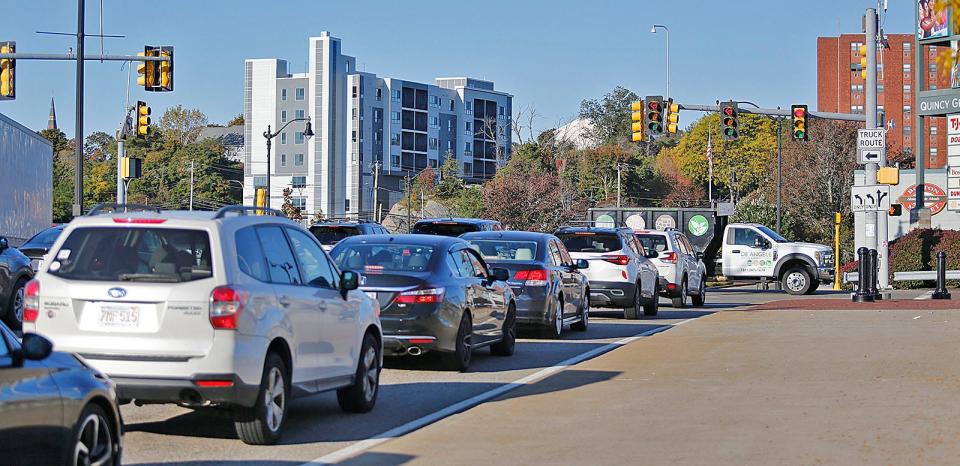
At a Quincy Planning Board meeting last week, D.J. MacKinnon, of Atlantic Development, presented preliminary plans for a mixed-use project at the intersection, including about 300 residential units, an eight-story parking garage and "specialty grocer" widely rumored to be Trader Joe's.
MacKinnon noted, and Ruel confirmed, that in the coming year, the city will reconfigure the road to move an intersection and traffic signal now at Hannon Parkway and Parkingway about 200 yards east to McConville Way. That will allow more space for vehicles approaching Burgin Parkway, Ruel said.
No. 2: Washington Street at Southern Artery
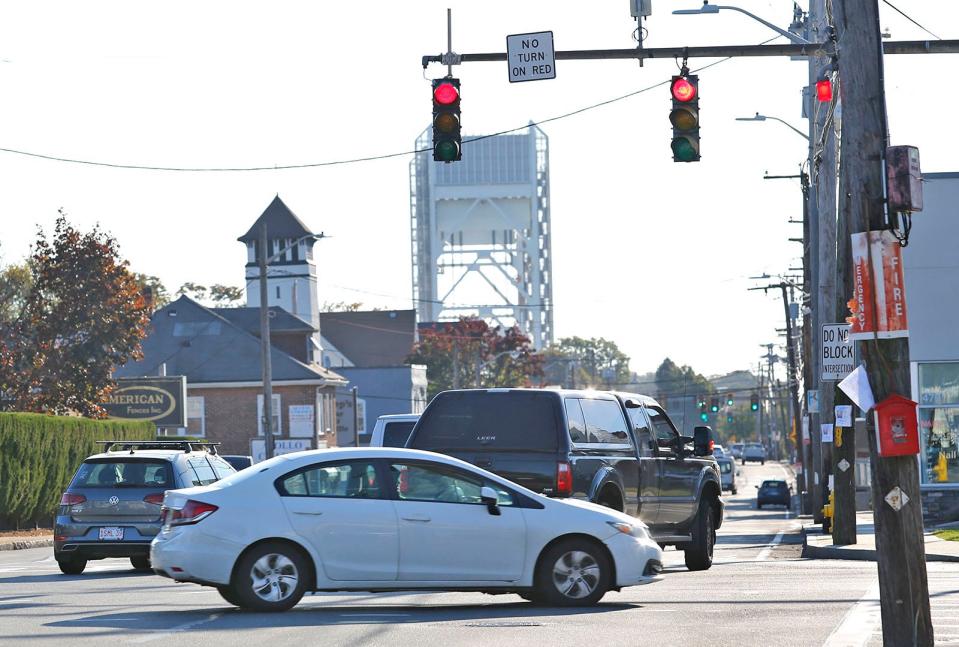
Another intersection between two major east-west and north-south thoroughfares, it had 54 accidents between 2018 and 2020, including 11 injuries, two of which involved fatal or serious nonfatal injuries.
Between 2011 and 2020, the same intersection had 25 pedestrian and bicycle accidents, which caused 20 injuries, five of which were fatal or serious nonfatal.
No. 3: Route 3A at Broad Street
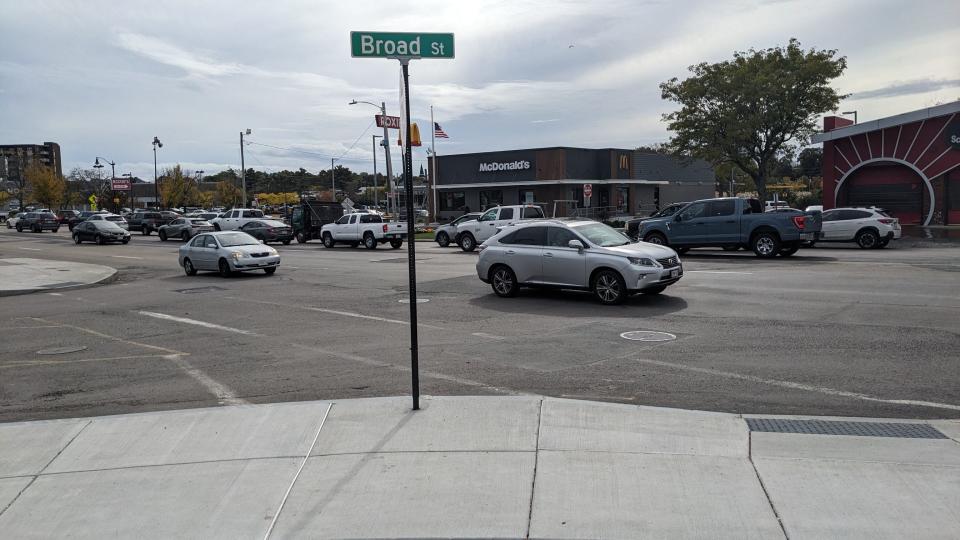
Ironically, this area is right in front of the Quincy police station and just around the corner from Ruel's office on Sea Street. Between 2018 and 2020, it had 47 motor vehicle accidents, including 12 injuries, one of which was fatal or serious nonfatal.
The same area had 27 accidents involving pedestrians or bicycles between 2011 and 2020, including 24 injuries, six of which were serious nonfatal or fatal. The area hosts a homeless shelter, a Stop & Shop, two car washes and fast-food restaurants, often requiring drivers to turn left across two lanes of heavy traffic to enter.
Ruel said the area is on her radar, and the city will soon find out if it will receive a grant from MassWorks, a state program which funds local infrastructure projects, to make safety improvements. They would include a median strip, better sidewalks, the addition of bicycle lanes, more signalized left turns and more.
There would also be an alternative way to enter and exit Broad Street with its popular bakery, eye care office and new housing resource center. Ruel said a road connection behind the new Father Bill's will connect Broad Street with Field Street, allowing drivers to reenter 3A at a traffic signal.
No. 4: Beale Street at Newport Avenue
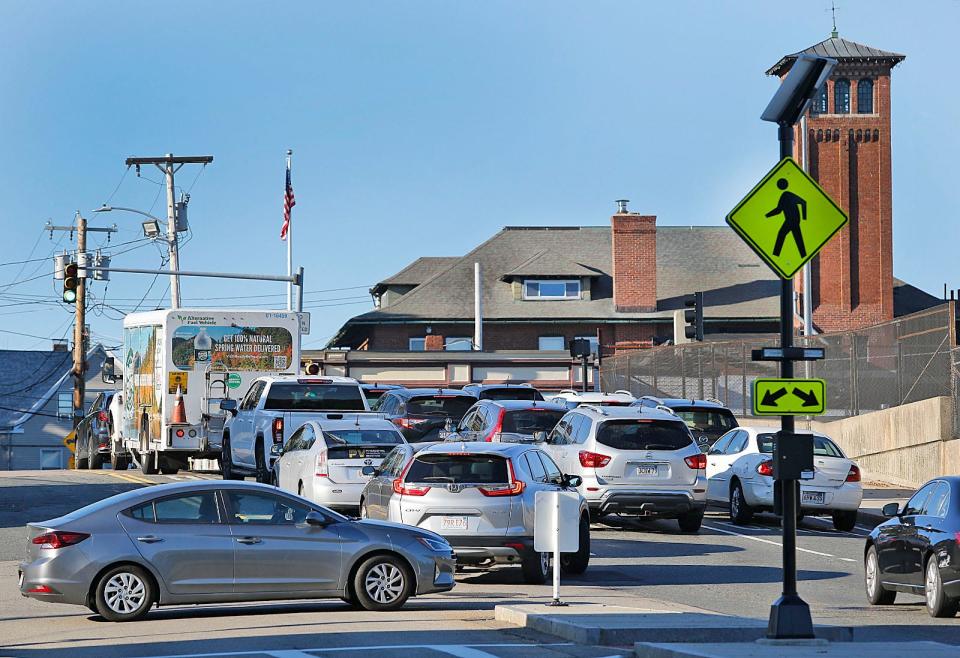
A high-volume intersection next to the Wollaston MBTA station, Beale and Newport tallied 39 accidents between 2018 and 2020, with six involving injuries, one of which was serious nonfatal or fatal.
Between 2011 and 2020, the same intersection had 43 pedestrian and bicyclist accidents, 32 of which involved injuries, including seven that were either serious or fatal. In terms of pedestrian and bicyclists, it matches the crossing of Hannon and Burgin parkways for Quincy's most dangerous intersection.
Because Beale Street slopes up to the west, and Newport Avenue slopes up to the south, Ruel said the "vertical profile" of the intersection creates visibility problems.
Minor improvements were made to the sidewalks when the new T station was built, but Ruel said a full reconstruction of the intersection is needed. That would involve added bicycle infrastructure at the crosswalk and down Beale Street, an area Ruel called a "key east-west desire line" for drivers, pedestrians and cyclists.
No. 5: Squantum Street at Hancock Street
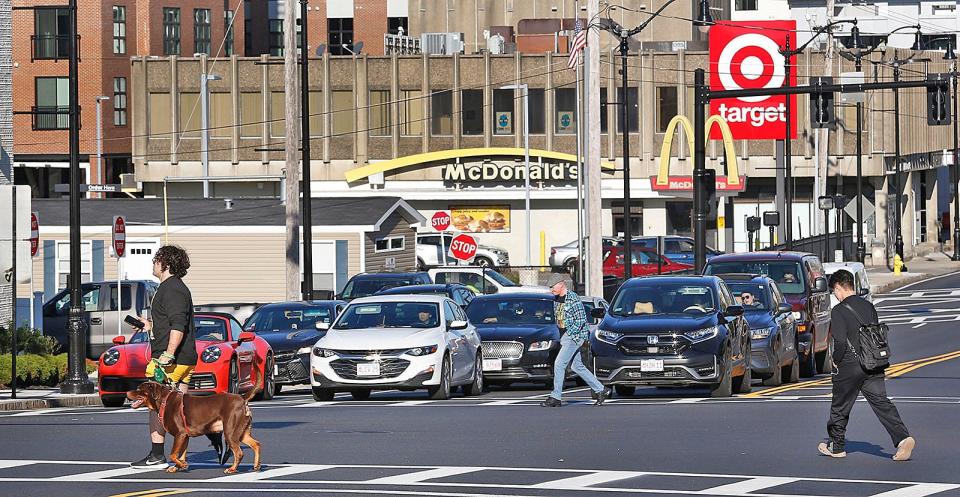
This crossing, where Hancock divides East and West Squantum streets, is another high-volume intersection with a lot of foot traffic. It neighbors the North Quincy T station, North Quincy High School, a Walgreens, a Target, a huge multifamily residential complex, two banks and a fire station.
Between 2018 and 2020, the intersection had 35 motor vehicle accidents, four of which caused minor bodily injury. Between 2011 and 2020, there were 31 accidents involving pedestrians and cyclists, 19 of which caused injuries, including four serious nonfatal or fatal injuries.
Ruel said the intersection was reconstructed around 2015, before she became the city's traffic engineer. She said data from the area is being reanalyzed, particularly because of the nearby school.
"It's a priority to protect vulnerable road users," she said.
Furnace Brook Parkway and Hancock Street. How engineering saves lives
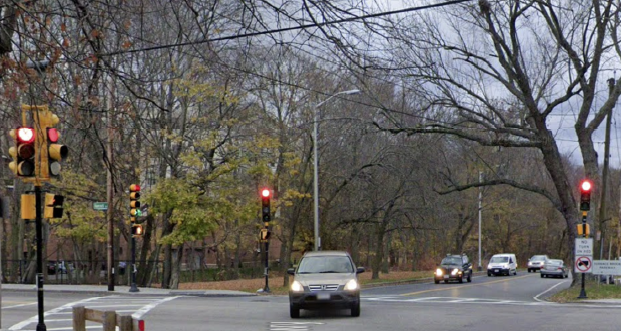
Ruel said that between 2016 and 2018, the intersection at Furnace Brook Parkway and Hancock Street was among the top 200 crash clusters in the entire state, according to state Department of Transportation data. She said that was all the more troubling because it is not one of Quincy's higher-volume areas in terms of traffic flow, meaning not just the number of accidents, but the rate of accidents, was too high.
More: Woman hit while crossing Newport Avenue; it's Quincy's 15th pedestrian crash this year
More: Notorious Quincy intersection to be redesigned. Here are the plans
Because the intersection is on a hill, Ruel said eastbound traffic turning left onto Hancock Street had reduced visibility of westbound through traffic. So the city made what Ruel calls "phasing changes" to the traffic signals governing the intersection.
Now, east- and westbound traffic move on separate phases, which prevents dangerous left turns and reduces accidents.
Due to this change, the intersection has fallen out of the top 200 list of crash clusters statewide. Ruel said that as the data catches up, it will fall out of the top 5% of crash clusters altogether.
Thanks to our subscribers, who help make this coverage possible. If you are not a subscriber, please consider supporting quality local journalism with a Patriot Ledger subscription. Here is our latest offer.
This article originally appeared on The Patriot Ledger: Quincy's top five dangerous intersections

